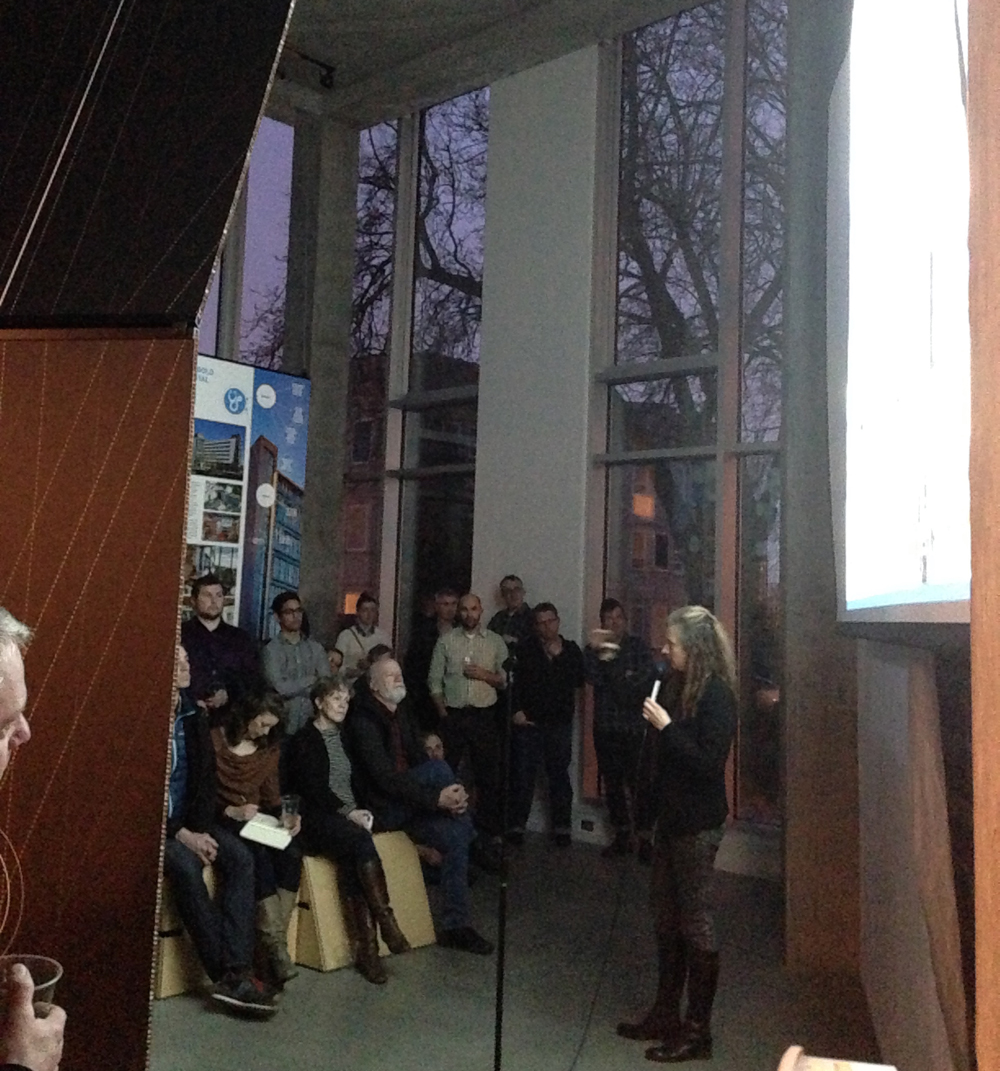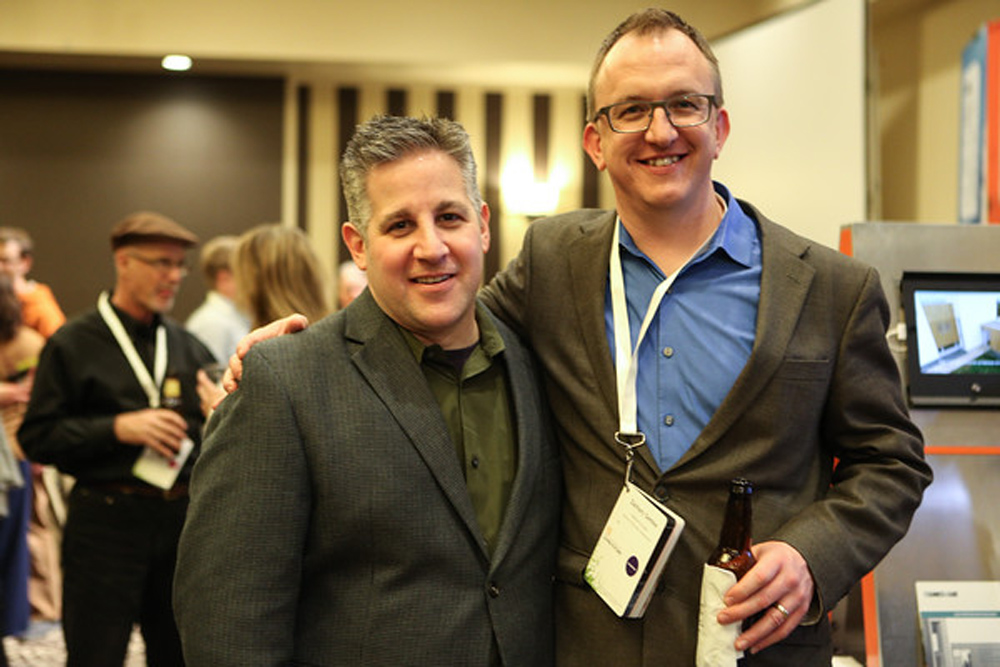Many of us at H&H are resurfacing from two weeks full of presentations, dialogue, and community building with our Passive House and Living Building colleagues.
On the evening of March 25, a capacity crowd of Passive House enthusiasts, green building practitioners, and building industry leaders joined us at the Bullitt Center’s Discovery Commons space to witness the launch of North America’s new passive building standard, PHIUS+ 2015. James Connelly (Living Building Challenge Manager at the International Living Future Institute), Leah Missik (Built Green Program Manager at Master Builders Association of King & Snohomish Counties), and Joe Giampietro (Board Member of Passive House Northwest) were on hand to make remarks congratulating PHIUS and PHAUS for its work and anticipating increased collaboration moving forward.
Our own Sam Hagerman, co-host of the party with PHIUS/PHAUS, emceed the evening and introduced PHIUS Co-Founder and Executive Director Katrin Klingenberg to party-goers. Katrin made the official unveiling of the standard, summarized its climate-specific and cost-optimized approach, and shred the technical underpinnings of PHIUS+ 2015. An exciting night!

Katrin Klingenberg speaking to the crowd about PHIUS+ 2015.
The next day we dove into the PHnw6 conference on Seattle’s waterfront. H&H’s Dan Whitmore taught a 4-hour intensive passive builders training during the day, and Skylar Swinford and I delivered an evening address entitled “Why Passive House? Because Buildings Can Restore” as a warm-up act to Lloyd Alter’s (of Treehugger fame) excellent keynote, “In Praise of the Dumb Home” – a critique of our society’s tendency toward techno-fascination and gadgetry that can short-circuit passive and other green building fundamentals. The next day was full of excellent Passive House workshops, including Sam’s standing-room-only presentation about H&H’s high performance wall assemblies:

Günter Lang of Passivhaus Austria delivered an uplifting address entitled “Sustainable Cities Go Passive,” somewhat tempered by Steve Hallett’s keynote, “Passive Houses, Efficiency Traps, and Some Unexpected Comments on Carbon,” a thought-provoking and challenging presentation about the Jevons Paradox, Peak Oil, and what lessons we can take from ecology to teach us about what we as species/society might expect in coming decades. Sobering stuff.
On April Fools Day we switched gears, joining the sold-out throng at the Living Future unConference 2015 at Seattle’s Sheraton for an inspiring three days of sessions about the Living Building Challenge and Living Communities. Dan and I had the pleasure of co-presenting a session with Dale Mikkelsen entitled “Conservation First!” making the case for the complementary nature of Passive House and the Living Building Challenge (via LBC’s Net Zero “Energy Petal”). Dale, who also won the 2015 Living Building Challenge Heroes Award at the conference, is a pivotal player in the inspiring Univercity green community project in Burnaby BC. Among many highlights at the conference were the plenary sessions with Ibrahim Abdul-Martin (Director of Community Affairs at the NYC Department of Environmental Protection) and Jason McLennan (CEO of the International Living Future Institute, our neighbors here at the Bullitt Center) and the “This One Goes to 11” interview of Bullitt Foundation President Denis Hayes by Brad Kahn.
 Eric Corey Freed, VP of Global Outreach with International Living Future Institute (left) and H&H’s Zack Semke at Living Future unConference 2015. Photo credit: Danielle Barnum.
Eric Corey Freed, VP of Global Outreach with International Living Future Institute (left) and H&H’s Zack Semke at Living Future unConference 2015. Photo credit: Danielle Barnum.

Passive House consultant Skylar Swinford shares H&H’s high performance building wall assembly mock up at Living Future unConference 2015.
My favorite quote from Denis came in response to a question about the daunting challenges we face in transforming our building stock fast enough to be climate friendly. Denis joked that as a younger environmentalist he sometimes measured a lecture’s success by how many participants wanted to commit hara-kiri at the end. Then one night his wife Gale joined him at a lecture. On the way home she remarked on the respect that she knew Denis held for natural selection and the power of competitive advantage.
“So tell me, what’s the survival value of pessimism?” she asked.
What gives Denis hope today? Our ability as a people to turn like a school of fish when we need to. He points out that it seems to take a big slap to the face first. Pearl Harbor was one such slap, resulting in unprecedented shifts of behavior, personal sacrifice, and mobilization of effort and ingenuity society-wide. Sputnik was another, launching the mind-blowing technological and logistical stretch that landed humans on the moon in the age of the slide rule. There’s precedent for major, coordinated human response to crisis.
We surely have some climate-related slaps coming our way which will test our species’ capacity for collective response. But what’s the survival value of pessimism?
Back to Field Notes